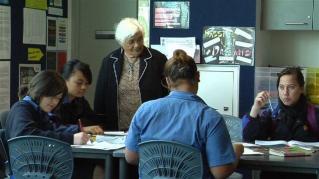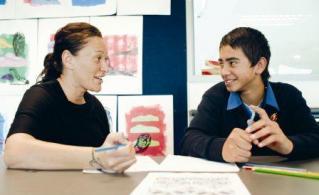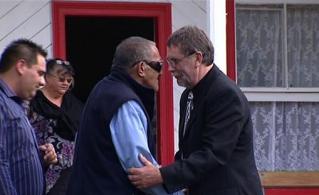Section navigation
This case study is one in a series published in Ngā Haeata Mātauranga: The Annual Report on Māori Education 2007/08.
This case study (available in te reo Māori and English) looks at how two early childhood education services in the Waikato region are supporting vulnerable whānau to develop their knowledge and skills and get hooked into the education system early.
The case study profiles the Parent Development and Support Project and reflects on the important role that services play in helping Māori learners (and their whānau) make a successful transition to school.
Research (Rubie-Davies et al, 2006; Tunmer et al, 2003; Wylie & Hipkins, 2006) shows that the transition to school and a child’s first years there have a significant influence on a child’s later achievement at secondary school – particularly for children from low-income backgrounds.
It shows that the transition from early childhood education to school requires significant adjustments for children and their whānau.
A child’s transition to school is more likely to be successful with support from the child’s whānau, early childhood education service, and school. It is also more likely to be successful when a child’s service and school can work together to help manage the differences between the two contexts.
Early childhood services that share information about children’s early learning and align the early childhood education sector and school curriculum have a positive influence on a child’s transition.
Research also notes the importance of well-developed foundation literacy and numeracy knowledge, and a child having the dispositions he or she needs to succeed at school, such as motivation, persistence, and curiosity.
A 2007 evaluation of a Ministry project exploring home and school relationships within and between five Flaxmere schools has provided insight into the benefits of programmes that focus on helping children successfully move from early childhood to school.
Of the 1800 learners who attended the five Flaxmere schools, approximately 71 per cent were Māori.
The evaluation found that, generally, teachers considered the early childhood transition-to-school initiative bridged the gap between home and school. Teachers said children settled into school more easily and whānau had an immediate connection with the school.
Practices noted as successful included:
- teachers and parents working together to set goals and expectations
- development of supportive practices for children at home and school, with parents given equipment and strategies (behavioural and learning) to help them support the learning at home
- expansion of the model of Parents as First Teachers, which gave opportunities for modelling best practice
- opportunities to talk about teaching and learning to develop understanding and expectations
- establishment of opportunities for building positive relationships between home and school early on in schooling.
The evaluation found the effects of the transition-to-school programme were expected to be far-reaching and to show up in longer-term outcomes, such as achievement, as the children and their parents progressed through the years of schooling.
Questions/Things to think about
- How does your school play a part in building on this work within the early childhood sector?
- How does your school help young Māori learners make a successful transition to school? What relationships help you achieve this goal, and why?
- What information, resources, and support do you have available for your Māori families? Could it be strengthened and improved this year?
transitioning to school (230 KB)
Filed under: productive partnerships | research & evaluation | effective leaders





